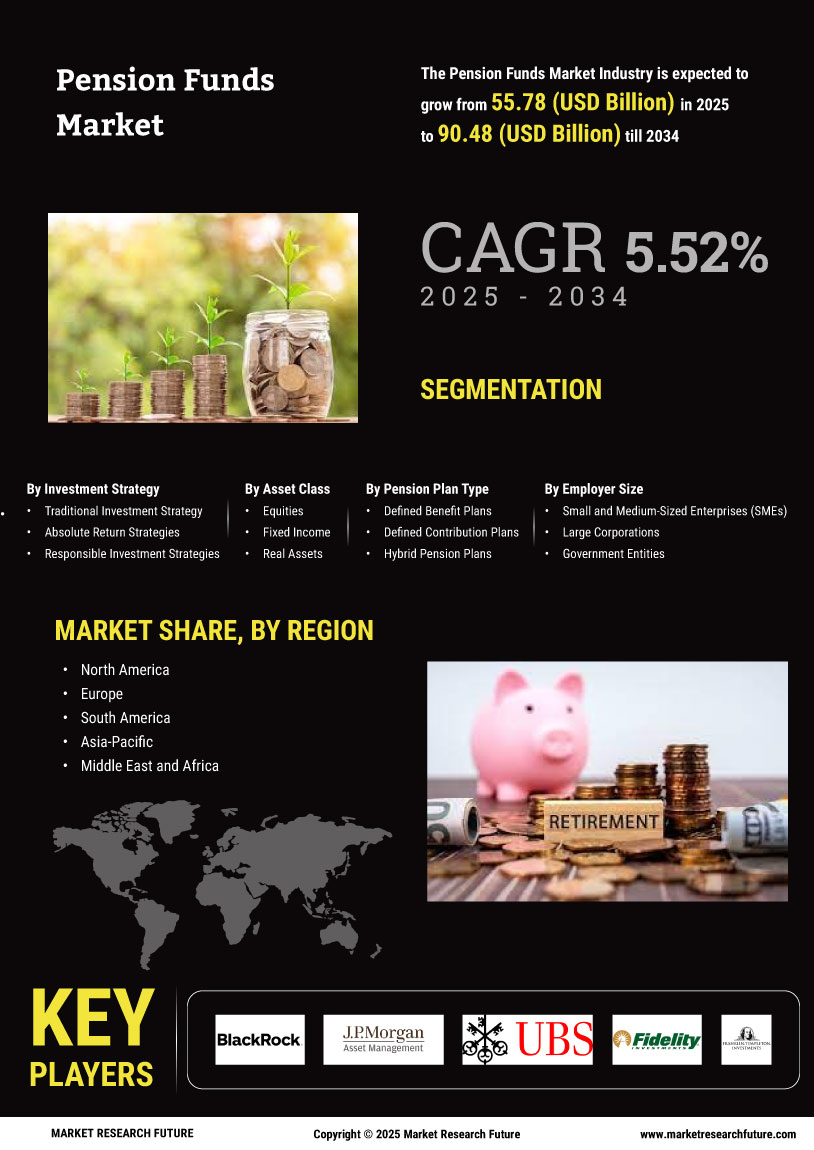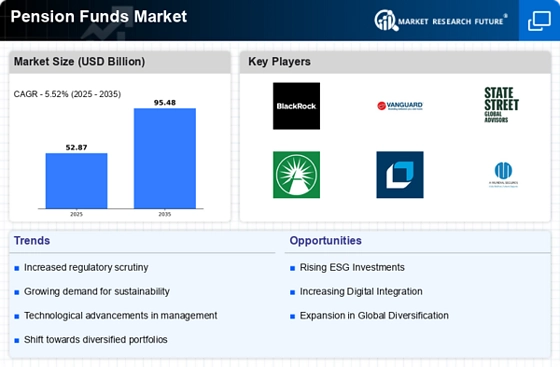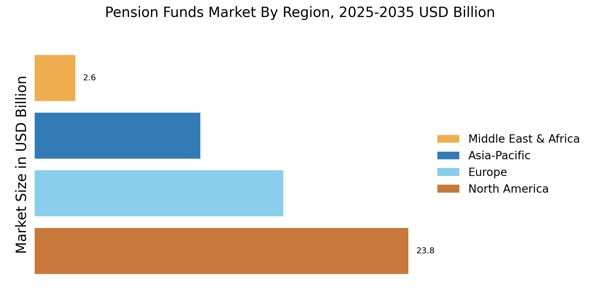The Pension Funds Market is currently characterized by a dynamic competitive landscape, driven by a confluence of factors including demographic shifts, regulatory changes, and an increasing emphasis on sustainable investment practices. Major players such as BlackRock (US), Vanguard Group (US), and State Street Global Advisors (US) are at the forefront, each adopting distinct strategies to enhance their market positioning. BlackRock (US), for instance, continues to innovate in the realm of technology and data analytics, aiming to provide more personalized investment solutions. Vanguard Group (US) emphasizes low-cost investment options, which appeals to a broad base of investors, while State Street Global Advisors (US) focuses on integrating ESG (Environmental, Social, and Governance) criteria into their investment strategies, reflecting a growing trend towards responsible investing. Collectively, these strategies not only shape their individual market positions but also influence the overall competitive dynamics within the sector.
In terms of business tactics, companies are increasingly localizing their operations and optimizing supply chains to enhance efficiency and responsiveness to market demands. The competitive structure of the Pension Funds Market appears moderately fragmented, with a mix of large institutional players and smaller niche firms. This fragmentation allows for diverse investment strategies and product offerings, yet the collective influence of key players like BlackRock (US) and Vanguard Group (US) tends to dominate market trends and investor preferences.
In August 2025, BlackRock (US) announced a strategic partnership with a leading fintech firm to enhance its digital investment platform. This move is likely to bolster BlackRock's capabilities in providing innovative investment solutions, thereby attracting a tech-savvy clientele and reinforcing its competitive edge in a rapidly evolving market. The integration of advanced technology into their offerings may also streamline operations and improve client engagement.
In September 2025, Vanguard Group (US) launched a new suite of ESG-focused funds aimed at institutional investors. This initiative underscores Vanguard's commitment to sustainable investing and reflects a broader industry trend towards responsible asset management. By aligning its product offerings with the growing demand for ESG investments, Vanguard positions itself as a leader in this niche, potentially capturing a significant share of the market.
In October 2025, State Street Global Advisors (US) expanded its global footprint by entering into a joint venture with a prominent asset management firm in Asia. This strategic move is indicative of State Street's intent to tap into emerging markets, which are expected to experience substantial growth in pension fund assets. By leveraging local expertise and resources, State Street may enhance its competitive positioning in the region, thereby diversifying its investment portfolio and client base.
As of October 2025, the Pension Funds Market is witnessing a pronounced shift towards digitalization, sustainability, and the integration of artificial intelligence in investment strategies. These trends are reshaping the competitive landscape, as firms increasingly seek strategic alliances to enhance their technological capabilities and market reach. The evolution of competitive differentiation appears to be moving away from traditional price-based competition towards a focus on innovation, technology adoption, and supply chain reliability. This shift suggests that firms that can effectively leverage these trends will likely emerge as leaders in the market.


















Leave a Comment